#fall armyworm moth
Text

@understones submitted: we found this caterpillar in western virginia - I would love to know what this becomes! could you identify it?
It's a noctuid moth caterpillar and I think probably in the genus Spodoptera - so maybe a yellow-striped armyworm moth or a fall armyworm moth, which are both common in your area. There's a wide variety of markings between individuals on the caterpillars so it can be difficult to be sure!
#insects#bugs#submission#moth#armyworm moth#armyworm#Spodoptera#yellow striped armyworm moth#fall armyworm moth#noctuidae
129 notes
·
View notes
Text
In the same tiny patch by our ash tree I saw a fall armyworm moth larva, a red-lipped lacewing larva, a lady beetle pupa and larva on the same leaf, a tiny ants, and a tiny green bug I couldn’t identify. Man I love bugs
3 notes
·
View notes
Text
IMPORTANT BUGWORLD NEWS !!

radiation resistant moths :3

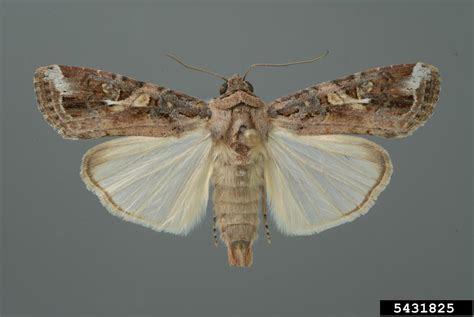
(Spodoptera frugiperda/fall armyworm and Helicoverpa armigera/cotton bollworm).
unfortunately for the radiation goblins, these little guys are pests who eat crops. so we've got some neat competition going if the radiation-goblins decide to take up agriculture. i really want to look up chernobyl and such to see what actually settled there but might be a starting point for insect evolution in the radiation-blasted regions
on other wilder bugworld news i think it would be neat if we got a hermit-crab-like creature who basically parasitises the machine army. exploits some weakness to get inside the machines and uses them as a shell
(bugworld is from this post by @skitter-queen and I dumped my nilbog goblin spec evo thoughts here!! please look at my goblins they eat radiation and have ssooooo many genes :] their lore is updated since the first post)
#i also want to start thinking about parts of bugworld other than. the radiation#but radiation... is cool...#bugworld#worm#wormblr#machine army#machine army is actually probably fucking up the radiation plains too... maybe my pacifist radiation goblins are unrealistic
5 notes
·
View notes
Text
Its moth time baby
Everyone look at the creechers I found in my local aeria.
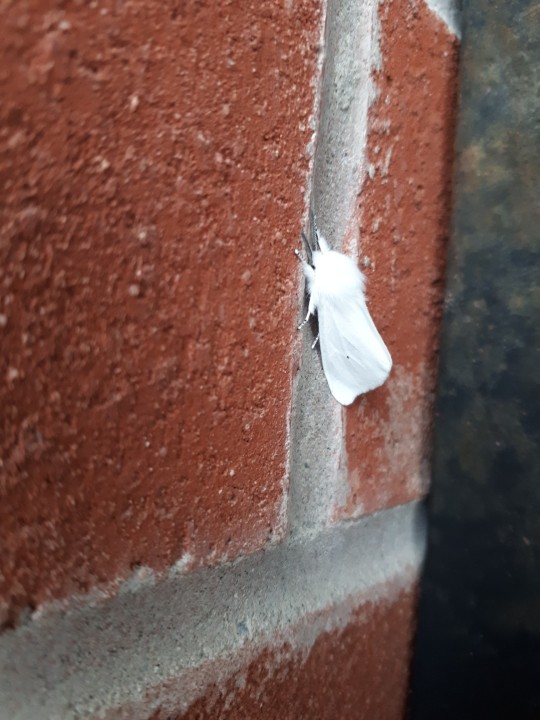
This little white fuzzball is a Virginia tiger moth.
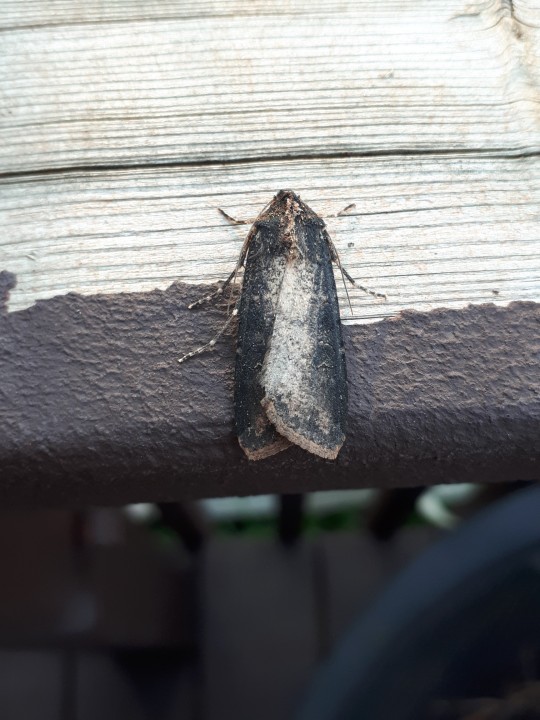
This man is at the moment unidentified
Let me know if you recognize him
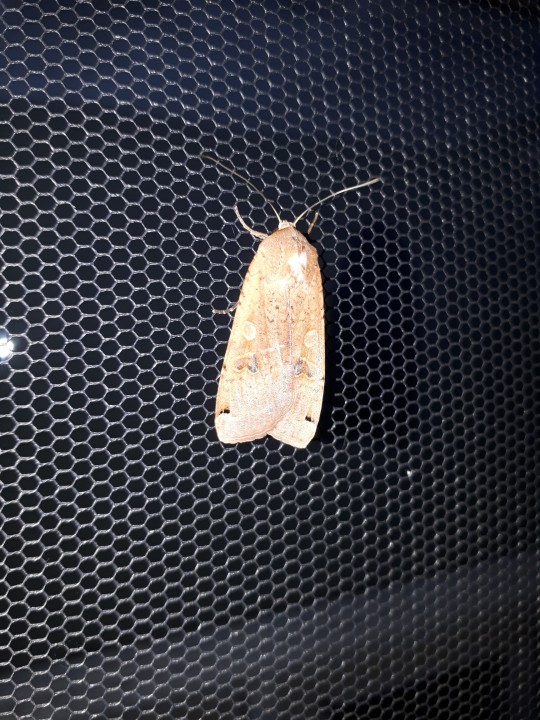
I believe this is a Fall armyworm moth
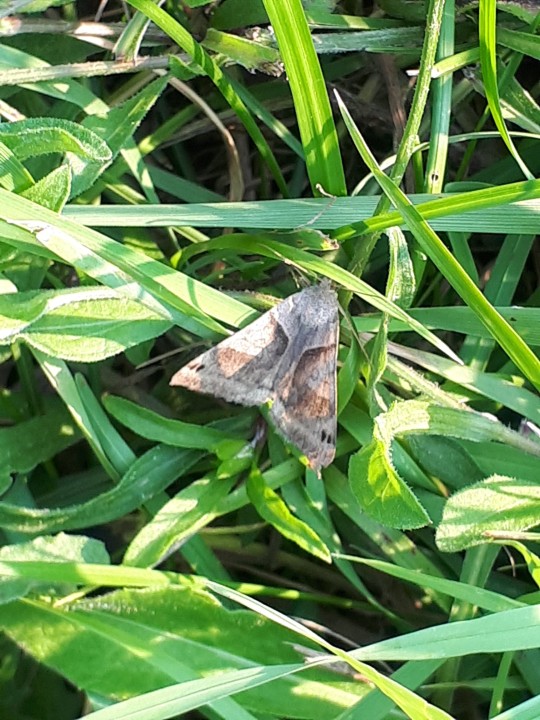
Another I'm not sure of. I remember identifying this one but I cant find it anymore. Once again please let me know.
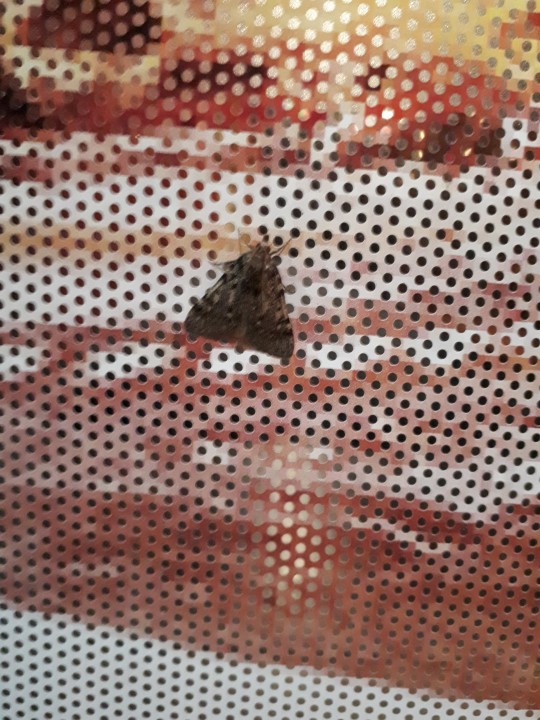
Poor quality photo of what I believe to be a large tabby moth
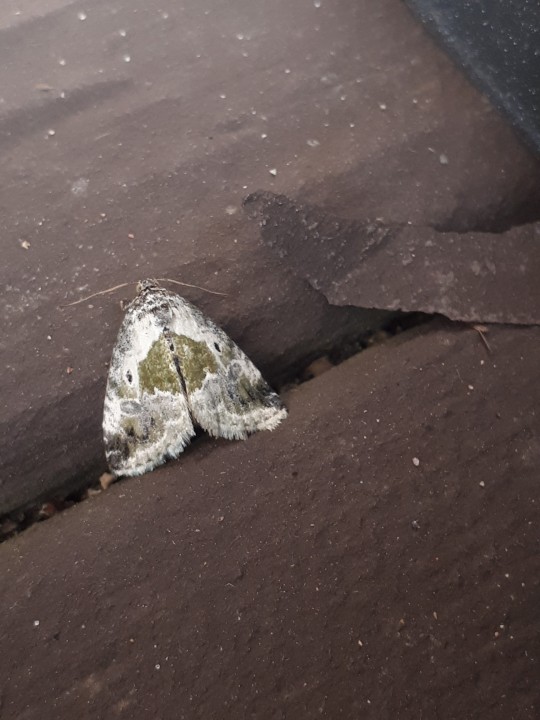
This little friend is a black dotted glyph. About 1cm long.
That is all for now.
Thank you for looking at my friends.
30 notes
·
View notes
Text
Identification And Management Of Common Lawn Pests
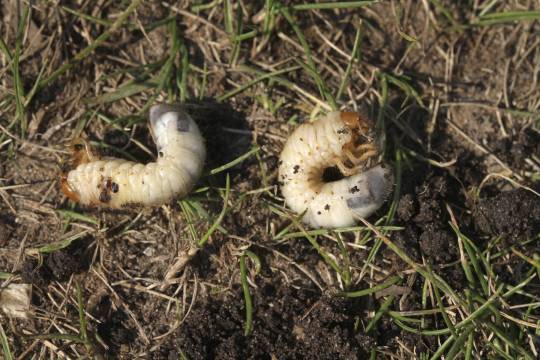
Maintaining a lush, green lawn requires more than regular mowing and watering. Beneath the surface, a silent battle is often waged against a variety of lawn pests Brisbane that can wreak havoc on your cultivated turf. It becomes evident that addressing lawn pest infestations promptly and effectively is essential not only for the appearance and health of the lawn but also for minimizing broader environmental impacts and preserving property value.
Here are some ways to identify and manage these culprits, equipping you with the knowledge to protect your lawn from their destructive tendencies:
Grubs. Grubs, the larval stage of various beetle species, are perhaps one of the most notorious lawn pests. These C-shaped larvae feed voraciously on grassroots, causing brown patches and weakened turf. Identifying grub infestations can be challenging since they reside below the surface, but signs such as spongy turf and increased wildlife activity can indicate their presence.
Armyworms. True to their name, armyworms can invade lawns in a mass, devouring grass blades with remarkable speed. These caterpillars, which mature into moths, are particularly active during the fall months. Signs of armyworm infestation include irregularly shaped brown patches and the presence of small, greenish-black larvae.
Chinch Bugs. Despite their diminutive size, chinch bugs can cause significant damage to lawns, especially in hot, dry conditions. These tiny insects puncture grass blades with their piercing mouthparts, injecting a toxin that leads to yellowing and eventual death of the turf. Look for characteristic symptoms like yellow or brown patches, particularly in sunny areas.
Sod Webworms. Sod webworms, the larvae of lawn moths, may seem innocuous at first glance, but their feeding habits can result in extensive lawn damage. These caterpillars create silken webs near the soil surface, which they use as shelter while consuming grass blades. Signs of sod webworm infestation include irregular patches of brown, closely cropped grass and the presence of small, white moths fluttering around the lawn in the evening.
Identification Techniques
Identifying lawn pest infestations early is paramount for maintaining a healthy lawn. Regular inspections can help detect signs of pest activity before they spiral out of control. Keep a keen eye on your lawn for telltale indicators such as brown patches, areas of wilting grass, and any unusual insect activity. These signs can be early warnings of pests.
Brown patches are often a visible indication of damage caused by lawn pests. These patches may start small but can quickly expand if left untreated, eventually turning large areas of the lawn into unsightly eyesores. Similarly, areas of wilting grass, where the blades appear limp or discolored, can signal underlying pest activity affecting the roots or foliage.
Unusual insect activity such as an abundance of insects congregating on the lawn surface or noticeable damage to grass blades, should also raise alarm bells. While some insect presence is normal in healthy ecosystems, an unusually high concentration or specific behaviors of lawn pests like feeding patterns can indicate an infestation. Regular inspections should be conducted throughout the lawn, paying particular attention to areas prone to moisture retention or stress such as shaded spots or areas near irrigation systems. Early detection in these vulnerable areas can prevent pest populations from establishing and spreading to other areas of the lawn.
0 notes
Text
Fall armyworm in maize; Understanding In Detail
Fall armyworm is larvae stage of fall army worm moth. It is a migratory pest native to America and was first reported in Africa in 2016. The army worm causes damage by feeding on leaves and stems of maize, rice, sorghum, sugarcane, vegetable and cotton.
Fall army worm damages maize in all stages. In maize seedlings, it causes damage by feeding within the whorl. Larger larvae can cut the base of…
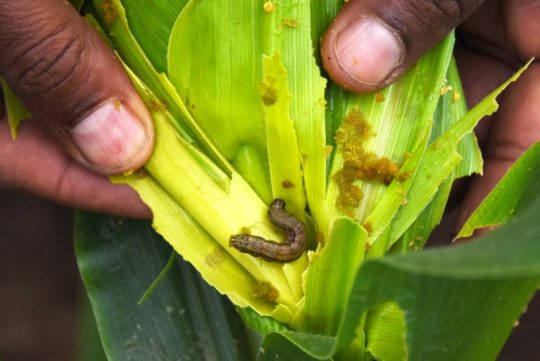
View On WordPress
0 notes
Text
Fwd: Graduate position: UMontpellier.LepidopteraEvolution
Begin forwarded message:
> From: [email protected]
> Subject: Graduate position: UMontpellier.LepidopteraEvolution
> Date: 3 June 2023 at 06:03:04 BST
> To: [email protected]
>
>
>
> We are looking for a motivated and diligent Ph.D. student in evolutionary
> genomics in Lepidoptera. The Ph.D. position is fully funded with a
> standard French salary, by Animal and Plant Quarantine Agence in South
> Korea, between October 2023 to September 2026.
>
> Title: Adaptation and migration inferred from genomic analyses in
> Lepidoptera species
>
> Project: The project is comprised of two parts.
> 1) The fall armyworm is one of the main pest insects in corn. The fall
> armyworm is native to North and South America, and the invasion of this
> species was first reported in 2016. Since then, the fall armyworm spread
> globally. During the Ph.D. project, the student will study population
> structure and infer the phylogenetic relationship among the main groups in
> the fall armyworm. The project might include other evolutionary aspects,
> such as Bt or insecticide resistance. NGS resequencing data were already
> generated.
>
> 2) The codling moth is one of the major pest insects in apples, pears,
> and walnuts. Mating disruption has been used since the 1980s to control
> the codling moth with sexual pheromones, reducing the reliance on chemical
> pesticides. Kairomones are also used as attractants to trap adult insects
> and monitor codling moth dynamics for integrated pest management, enabling
> treatment at the stage when the insect is susceptible to these control
> measures. However, commercial sexual pheromones and kairomones efficacity
> might decrease through field-evolved codling moth adaptation. The student
> will use population genomics analyses and functional assays to test this
> hypothesis. The project also includes the inference of effective migration
> rates among different places in France using next-generation sequencing.
>
> Supervision: The student will perform the study with the supervision and
> direction of Kiwoong Nam at UMR-DGIMI (INRAE, Montpellier). The second
> part of the projects will be performed through close collaboration with
> Myriam Siegwart and Bertrand Gauffre at PSH (INRAE, Avignon), as well
> as Phillip Lucas at iEES (INRAE, Versailles). The primary host unit will
> be UMR-DGIMI on the Triolet campus of the University of Montpellier. The
> student will be affiliated with the GAIA doctoral school at the University
> of Montpellier.
>
> Eligibility: The candidate needs to have a master's degree at the time
> of the start. The student needs to have a robust background in genetics,
> genomics, or bioinformatics. The ability to computer-programming will be
> highly beneficial. Previous experience in entomology (insect manipulation)
> would also be appreciated.
>
> The candidate needs to send an email with a CV with two references,
> a motivation letter, and transcripts from the bachelor's and master's
> degrees to Kiwoong Nam ([email protected]). The deadline for
> submission is 18th June. If we do not find a qualified candidate,
> we may re-advertise the position.
>
> If you have any questions, please contact Kiwoong Nam.
>
> Kiwoong Nam
> Charg? de Recherche
> UMR DGIMI 1333, INRAE
> B?t 24 4?me ?tage, Place Eug?ne Bataillon CC54
> 34095 Montpellier, France
>
> https://ift.tt/DeTF429 ?
>
> Charg? de Recherche
> UMR DGIMI 1333, INRAE
> B?t 24 4?me ?tage, Place Eug?ne Bataillon CC54
> 34095 Montpellier, France
>
> Tel. 33(0) 04 67 14 47 20
> Fax. 33(0) 04 67 14 42 99
>
> https://ift.tt/DeTF429
>
>
> [email protected]
>
> (to subscribe/unsubscribe the EvolDir send mail to
> [email protected]
0 notes
Text
How to Get Rid of Armyworms in Kenya
How to Get Rid of Armyworms in Kenya
The Fall Armyworm (Spodoptera Frugiperda) is a pest that can cause economic damage to crops if left to multiply. They mainly attack the maize crop but once its food crop is exhausted, will eat the next available crop including barley, millet, peanuts, rice, sorghum, soybeans, wheat, etc.
Fall armyworm (FAW) [Spodoptera frugiperda] is an insect pest with moths as the adult stage and larvae…
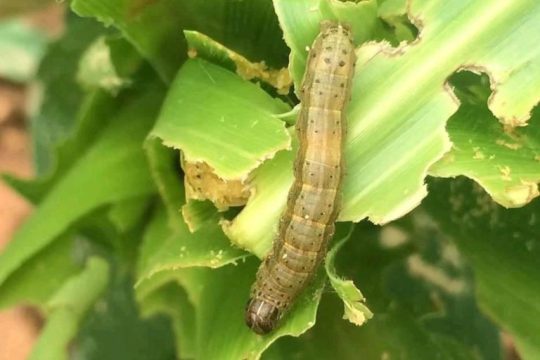
View On WordPress
0 notes
Text
Names of all butterflys
1. Tiger Moth
2. Monarch butterfly
3. Red admiralInsects
4. Luna Moth
5. Hawk moths
6. Peacock butterfly
7. Small tortoiseshell
8. Common clothes moth
9. Rosy maple mothInsects
10. Atlas moth
11. Painted lady
12. Domestic silk moth
13. Jersey tiger
14. Morpho
15. Large white
16. Polyphemus moth
17. Lymantria dispar
18. Swallowtail butterfly
19. Common brimstoneInsects
20. Isabella tiger moth
21. Cabbage white
22. Southern flannel moth
23. Brush-footed butterflies
24. Fox moth
25. Giant leopard moth
26. Garden tiger moth
27. Gossamer-winged butterflies
28. Flannel moths
29. Goat moth
30. Palm moth
31. Calyptra thalictri
32. Clothes moths
33. Owlet moths
34. Saturniids
35. Pale tussock
36. Oak processionary
37. Geometer moths
38. Buff-tip
39. Chrysiridia rhipheus
40. Fall webworm moth
41. Lonomia
42. Fall armyworm
43. Burnet moths
44. Lappet moths
45. White witch
46. Erebidae
47. Bagworm moths
48. Creatonotos gangis
0 notes
Text
Will Grass Grow Back After Armyworms?
Will Grass Grow Back After Armyworms?
What are armyworms? This is the colloquial name of the larval stage of several different moth species, and the most common one that causes damage to grass in the United States is the fall armyworm. These are caterpillar pests that can infest fields anywhere around the world. About thirty species of armyworms are found across the globe, on every continent except Antarctica.
What Do Armyworms…
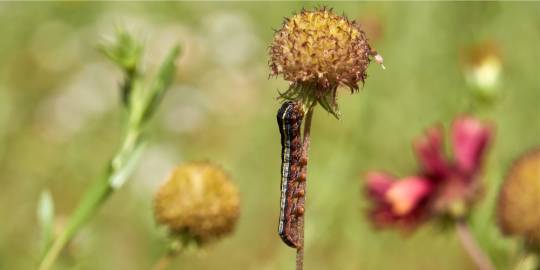
View On WordPress
0 notes
Text
Science: How Novavax Is Different From Other Coronavirus Vaccines
— Analysis By Bonnie Berkowitz, Carolyn Y. Johnson and Aaron Steckelberg | July 13, 2022 | The Washington Post
The newest entry into the U.S. arsenal of coronavirus vaccines uses the oldest technology of the bunch. FDA authorizes Novavax covid vaccine
The four vaccines authorized by the Food and Drug Administration all teach the body’s immune system to recognize and attack the virus that causes covid-19, but each type does it a little differently.
The first two vaccines, by Pfizer-BioNTech and Moderna, debuted the newest technology. Johnson & Johnson’s vaccine was created using a slightly more conventional method. The most recent vaccine to be greenlighted was made by Novavax through a process commonly used since the 1980s.
What All Four Have in Common
Vaccines imitate an infection, giving the immune system a sort of practice target so that it learns how to quickly recognize and defend against the real virus.
All four coronavirus vaccines available in the United States trigger the immune system with antigens, benign replicas of bits of the virus.

Each type of vaccine delivers a different antigen in a different way, but they all teach the immune system to recognize the proteins that make up the virus’s signature spikes. Those spikes are the keys that allow the coronavirus to unlock and infect cells.
Once the antigens are in the body, the reaction is the same.
Specialized cells break the antigens down into a form the immune system can recognize, and they pass the information along to other cells that marshal infection-fighting troops.

Then two armies of white blood cells — B cells and killer T cells — prepare to attack.
B cells produce antibodies that attach to the coronavirus’s spikes, blocking the virus from latching onto and invading healthy cells.

Meanwhile, killer Ts recognize the antigen residue on infected cells and kill those cells. That stops the virus from using the cell’s machinery to replicate itself.

Novavax Contains Lab-grown Spikes
The Novavax vaccine is called a subunit vaccine because it uses a portion of a virus to activate the immune system.
Scientists grow coronavirus spike proteins in the cells of fall armyworm moths inside giant bioreactors. (Insect cells are particularly good at making complex proteins such as those that make up the spikes.)
They mix in a detergent to create a spike-covered soap bubble that looks like the coronavirus. They also add an ingredient called an adjuvant that revs up the immune system so it will respond more forcefully.

Subunit vaccines take longer to produce than the newer types. A handful of cases of heart inflammation occurred during the Novavax trials, although it is unclear whether the vaccine caused the inflammation.
But Novavax has advantages. It stays stable longer under typical refrigeration, does not contain ingredients used in other vaccines that trigger allergies, and may appeal to people who prefer an older, more familiar technology. Some flu, hepatitis B and shingles vaccines are subunit vaccines.
Pfizer-BioNTech and Moderna Deliver Blueprints in Fat Bubbles
A Novavax shot contains ready-made virus spikes; a Pfizer-BioNTech or Moderna shot contains instructions so the body can make spikes.
These shots are called mRNA vaccines because they contain messenger RNA, a strip of synthetic genetic material that matches the virus. It is delivered in a tiny fat bubble.
Once inside a healthy cell, the RNA generates replicas of the spike proteins.

Pfizer-BioNTech’s and Moderna’s shots are the first mRNA vaccines approved for widespread use, but the cutting-edge technology had been in development and testing for years before the pandemic.
The mRNA coronavirus vaccines can be manufactured quickly, and most people tolerate them well with no more than mild, short-lived side effects. But they are not ideal for everyone.
Some people are allergic to an ingredient used to stabilize the mRNA vaccines. In rare cases, vaccine recipients — mostly younger men — can develop heart inflammation after being vaccinated. And some people have been hesitant to try a new technology.
J&J Delivers Instructions in a Cold Virus
The vaccine created by Johnson & Johnson also carries spike-making instructions, but it does it differently than the mRNA vaccines. As a “viral vector” vaccine, it delivers a gene into the body in a harmless, modified cold virus.
Inside healthy cells, the gene delivers codes for the spikes and the cell churns them out.

Viral vector technology is not new, but only a handful of vaccines made from it have been approved for use in humans, including an Ebola vaccine.
Because some people developed a rare but life-threatening blood-clotting syndrome within a few weeks of getting the Johnson & Johnson vaccine, the FDA has limited its use to those who cannot or choose not to get one of the other vaccines.
None of the coronavirus vaccines are made with the very oldest technology, which uses weakened or dead versions of the entire virus. Two well-known examples of such vaccines are the ones for polio and for measles, mumps and rubella.
— Sources: Centers for Disease Control and Prevention, National Institute of Allergy and Infectious Diseases, University of Nebraska Medical Center
Bonnie Berkowitz is a reporter in the Graphics department at The Washington Post who often focuses on Health & Science topics.
Carolyn Johnson is a science reporter. She previously covered the business of health and the affordability of health care to consumers.
Aaron Steckelberg is a senior graphics reporter who creates maps, charts and diagrams that provide greater depth and context to stories over a wide range of topics. He has worked at the Post since 2016.
0 notes
Photo
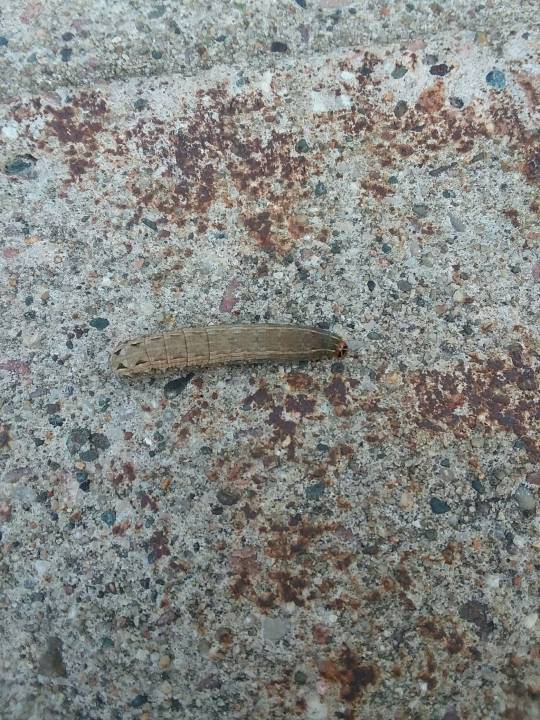
@tac-naynn submitted: found in Sioux Falls, South Dakota
who is this guy!! i found him when i was walking to the bus stop and was very happy because i dont think ive seen a caterpillar all year but idk what kind he is
They’re uhhhhhhhhhh a friend! Definitely a noctuid moth caterpillar, probably a yellow-stripd armyworm moth :)
51 notes
·
View notes
Photo

Day 5
Fall Armyworm Moth
12 notes
·
View notes
Photo

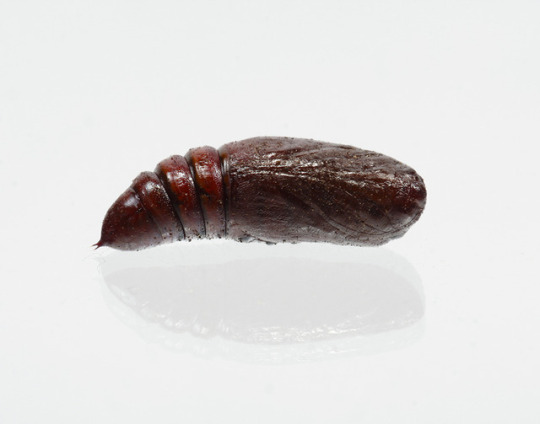
Fall Armyworm / Spodoptera frugiperda (9666) caterpillar & pupa.
#spodoptera frugiperda#fall armyworm#lepidoptera#moth#caterpillar#pupa#noctuoidea#noctuidae#noctuinae#prodeniini#owlet moth#new jersey#middlesex county#insect
6 notes
·
View notes
Text
What Bug Is This? 103: Fall Armyworms
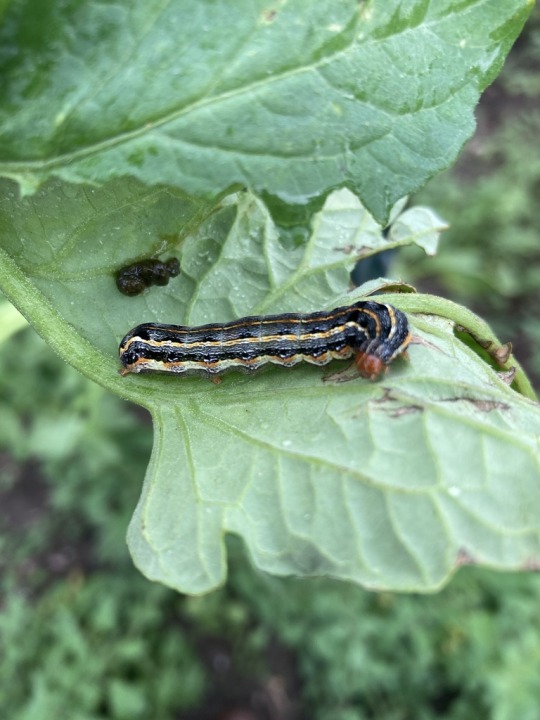

Image Source: larva: mdfox72, license; adult: Sam Kieschnick, license
Common name(s): fall armyworms (usually refers to larvae), fall armyworm moths (usually refers to adults)
Scientific name: Spodoptera frugiperda
Can it hurt me?: No
Can it hurt my plants?: They are voracious feeders and show up in large numbers. In particular, they are known for being agricultural pests of many crops including corn, cotton, rice, and much more. They’re native to the Americas, but have been introduced in a few other places including Africa and Asia where they’ve become invasive.
Should I kill it?: Yes, though I’m not an expert in how to get rid of them.
Anything else I should know?: They can’t survive freezing temperatures during the winter making them more common in warm areas, but they are capable of traveling far and fast once temperatures warm up. They can even reach Canada sometimes by the end of summer. This is a species that will likely become an even bigger problem with climate change as the warmer temperatures will allow it to increase its wintering range.
21 notes
·
View notes
Text
After bringing in the coleus and poinsettia for some rare winter weather (in early November, I think), I found that the coleus was infested with some kind of tiny, pencil-lead-thin bright green inchworms which, when touched, wriggled themselves right off of the leaves they were eating and were easily transported outside. Several weeks later, I discovered that I may have missed one.
It was hanging under a poinsettia leaf (different plant, so I’m not sure it’s the same insect) one evening and, by the next morning, had descended into a neighboring pot and crawled under some leaves. I don’t know if it was trying to eat the poinsettia. Sadly, I only have one picture available for identification purposes.

(Approx 3 inches long. Still alive and responding to touch at the time of this photo.)
And now it’s GONE.
Best guess? Burrowing moth?? (I have no training in this.)
The situation: No one sees any point in killing it if it’s at the end of its growth cycle. We’re generally a fan of butterflies and moths here.
The problem: One of us is a lifelong insectophobe who appreciates such things from a great distance and will not even approach the room in which the caterpillar vanished until someone figures out where it went.
Need: What it is, where it likes to pupate. If burrowing, how deep it likes to burrow. I already dumped out one pot and its contents looking for this thing and most of the rest of the pots in the room are planted. I can’t dump them out and the last thing any of us needs is the one insectophobe in the house finding whatever comes out in a place where no one expected it.
Region: South Texas.
Thank you so much for your help.
----
It looks like a fall armyworm (Spodoptera frugiperda) which is a common garden pest. It has likely moved on to pupate in the dirt in one of the planted pots in your room since it appears to at the last stage of caterpillarhood. It’ll turn into this moth:

13 notes
·
View notes